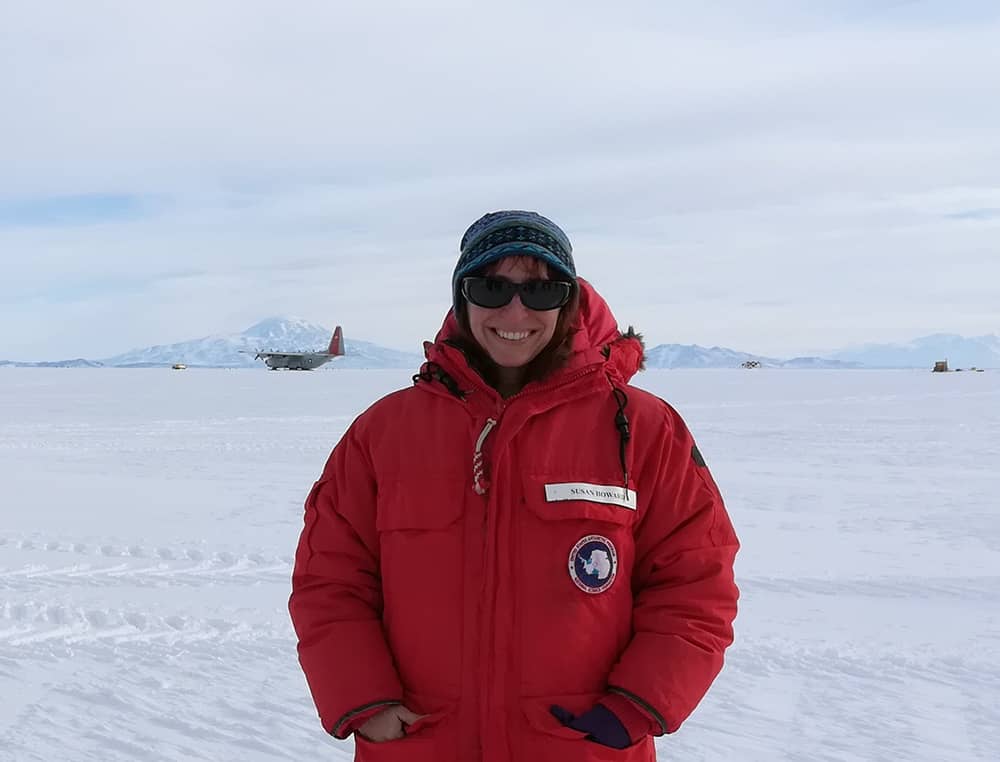 For nearly three decades, Susan Howard has been at the center of ESR’s polar research, building models, wrangling data, and shaping how we understand the edges of our planet.
For nearly three decades, Susan Howard has been at the center of ESR’s polar research, building models, wrangling data, and shaping how we understand the edges of our planet.
She first joined ESR in 1997, fresh from her master’s degree in oceanography at Oregon State University. Following her advisor, Laurie Padman, to ESR, Susan carried forward her thesis work on Arctic tides, laying the foundation for a career devoted to polar science.
“I always wanted to be a scientist. Oceanography felt tangible—something you can see and measure,” she recalls.
Susan’s early years at ESR combined tide modeling with painstaking data analysis, processing mooring and current meter records. Though much of her work was computational, she also ventured into the field. Her first major expedition came in 2001 with an Antarctic cruise, followed by a return trip in 2017 with the ROSETTA-Ice project, a large interdisciplinary collaboration between several US institutions.

Through it all, tides remained a consistent thread. She explains, “Even when working with satellite data, tides are always in the background. Maintaining and improving tide models for the Arctic and Antarctic is still a core part of what we do.”
As the technology landscape shifted, so did Susan’s work. Early in her career, she worked with data that fit on a floppy disk; today, she navigates petabytes of satellite observations in the cloud.
Her current projects highlight that transition:
These efforts represent a broader ESR hallmark: adapting emerging technologies to reveal truths about the polar environment and beyond.
Susan emphasizes the stakes of this work and why the polar regions are so important. “The Antarctic ice sheet alone has a huge potential to affect sea level. Sea ice, meanwhile, controls how much sunlight the Earth reflects and regulates heat exchange between the ocean and atmosphere.”
Melting ice doesn’t just raise seas (if it is land ice), it reshapes global circulation patterns. An excess of fresh meltwater can alter ocean density and disrupt the overturning circulation that moves heat and nutrients around the globe. “It’s a fine balance,” Susan explains. “Changes in the Arctic and Antarctic ripple across the entire climate system.”

Asked whether she feels hopeful about the future of the poles, Susan answers with cautious optimism: “The changes are real, but I have to believe we can do something about it, prepare, adapt.”
She worries about threats to scientific funding. “The prospect of shutting down satellites when polar regions are changing so rapidly is frightening. Even if you don’t care about climate change, monitoring matters for national security, for commerce, for knowing what’s coming.”
Looking forward, Susan sees ESR continuing its mission of delivering rigorous, collaborative science. She also envisions expanding into local projects, applying ESR’s oceanographic expertise to the Puget Sound and nearby mountain glaciers.
At the heart of it all is her belief that science must endure, even when political winds shift. “Monitoring our planet is essential for knowing what comes next. Whether we can prevent change or not, we at least need to be prepared.”
For Susan, curiosity doesn’t end at work. She shares her passion with her daughter, through outreach, and in the joy of exploring the natural world. “That curiosity is who I am,” she says.
At its core, Susan’s mission, and ESR’s remain committed to persistence, adaptation, and understanding the most critical, and fragile, regions on Earth.